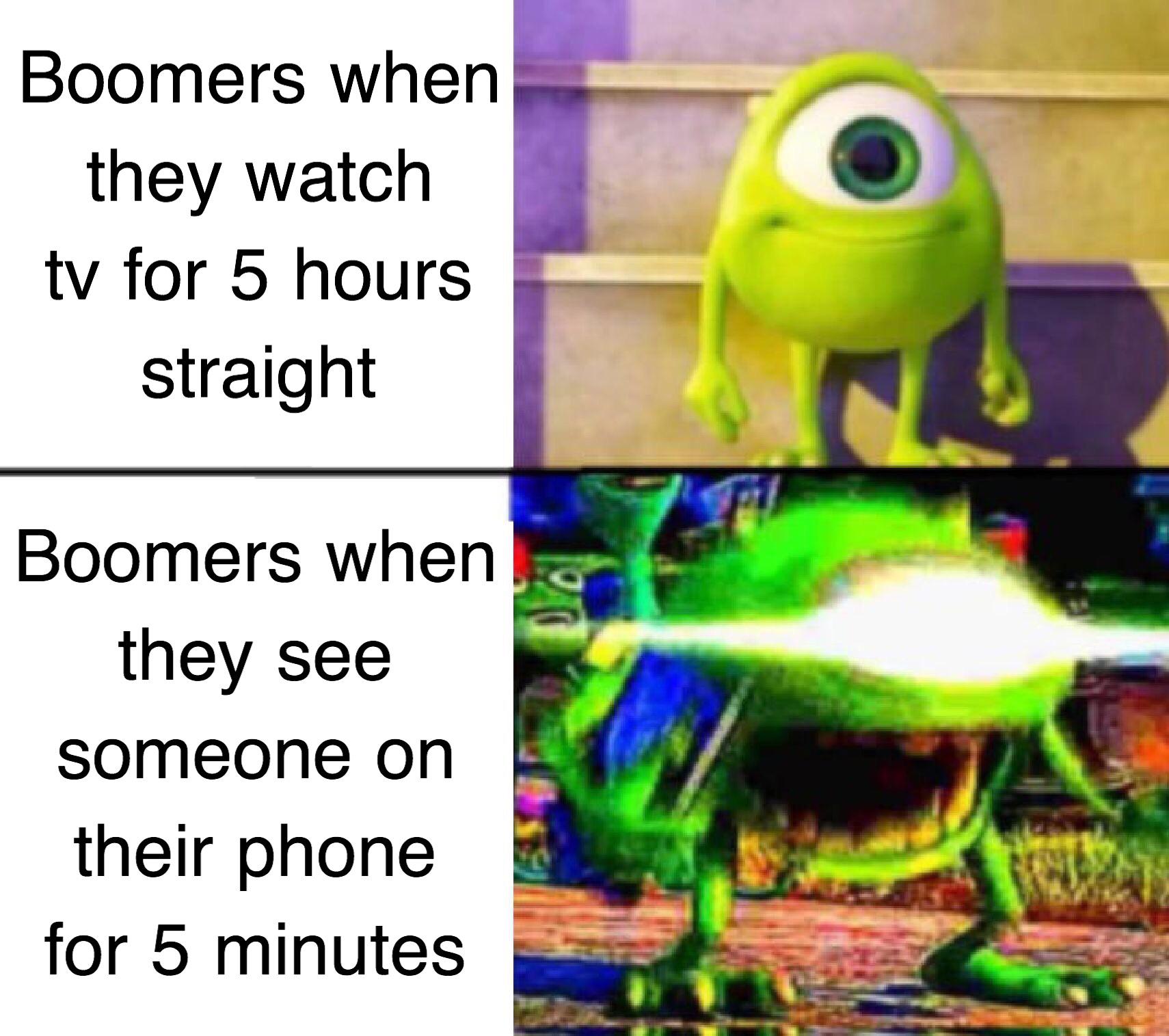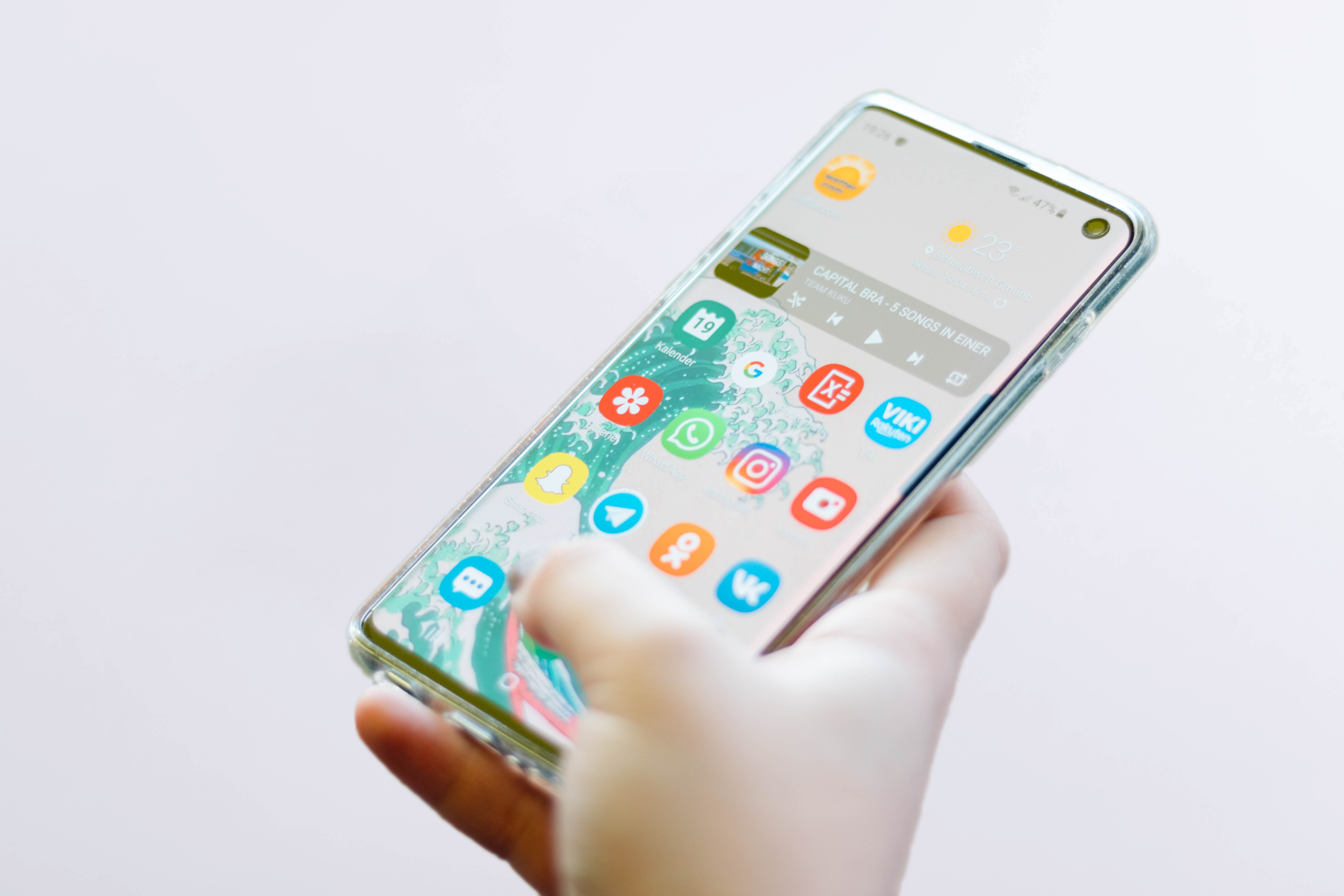You’ve probably heard it a million times. Our generation won’t get off our damn phones.
I’ve seen way too many memes about how supposedly out-of-touch baby boomers criticize the younger generations for always being on their phones:

And yes, I’ve seen this Steve Cutts video with Cuphead-esque animation on Facebook about how cruel, cold, and uncaring our world is because people have phones.
The black-and-white video, played to sad music, shows an apocalyptic future where the population has become mindless slaves to their mobile devices. People ignore, or even film, awful events such as the police beating up an unarmed man, a woman getting harassed on the subway, and even a girl committing suicide. One scene even shows a group of people trapped inside cell phone-shaped prisons. The video ends with everyone blindly walking off a cliff while staring at their phones.
Truly, this says a lot about society.
While I don’t like the video’s extreme hyperbole and oversimplification, I have to admit that Cutts has a point – and I’m not referring to those who died trying to take selfies. Smartphone dependence is a real thing. I won’t use the word “addiction” because I can’t say who truly qualifies for being an addict rather than merely obsessed with their phone.
A comScore report says that most people two hours and 51 minutes a day on their phone. An even bigger number comes from RescueTime, an app that monitors cellphone use, which claims that the average person spends 3 hours and 15 minutes on their device each day.
You’ll find different studies all over the internet, but most figures hover around 2-3 hours.
To me, those sound like rookie numbers. I know I spent at least that much time playing Hearthstone the other day. (Note: RescueTime’s study wasn’t conducted during quarantine, so the numbers are probably higher now.)
Here are my shameful numbers to prove it:

The main argument against smartphones is that they’re distracting and hamper productivity.
The RescueTime study says that people pick up their phones an average of 58 times a day, with 30 of those pickups during working hours. Yet, an Asurion study puts that number at 96. These distractions drastically affect your performance.
In fact, Udemy’s 2018 Workplace Distraction Report found that 54% of respondents “aren’t performing as well as they should,” and 50% of respondents “are significantly less productive” due to distractions. Most of the time, people are merely checking notifications.
But one look at Instagram or Reddit can quickly lead you down a rabbit hole of lost time. After all, social media is designed to be addicting.
Former Facebook president and early investor Sean Parker claimed that the website thrived by “exploiting a vulnerability in human psychology.” He mentioned that the notifications cause small dopamine hits, which creates a positive feedback loop.
Similarly, ex-Facebook vice president for user growth Chamath Palihapitiya said the company “created tools that are ripping apart the social fabric of how society works ” and that people are being programmed without realizing it.
Social media provides validation, especially to those who feel lonely or insecure. People get excited when they receive hearts, likes, views, or positive comments. Most apps have an infinite scroll meaning that users can browse endlessly and never run out of fresh content.
What’s even more upsetting is that social media perpetuates outrage culture as the internet finds new things to be angry about. An NYU study found that adding moral-emotional words to tweets increases engagement by 20%.
I can’t count the number of times I’ve seen something offensive or enraging on social media that led me to a downward spiral of negativity. I spent way too much time reading, thinking about, or responding to offensive content, which severely limited my productivity.
Don’t even get me started on fake news and public shaming.
And that’s not to say that social media is purely a time-waster. I use Snapchat to call my girlfriend and one of my best friends each night. Pinterest is my go-to destination for finding awesome photography ideas for when the quarantine finally ends. Reddit helps me connect with other freelance writers who have helped me with my career. YouTube is one of the best ways for me to discover at-home workouts I can do on the floor.
But there still needs to be a limit.
The average person spends two hours and six minutes on social media each day – a total of over six years across a person’s lifespan.

What can you do?
If you’re like most people, your phone is taking a heavy toll on your life and productivity. I’m not advocating for giving up your phone entirely, but rather to adjust your usage. Here are some proven ways to put down your phone:
Digital Wellbeing Apps
Digital wellbeing apps help you monitor and control how much time you’re spending on your phone or specific apps. These help you put your time usage into perspective as you’ll probably discover that you were spending way more time on your phone than you initially thought. According to Google, 78% of people feel happier about their phone usage after installing a digital wellbeing app.
Android phones come with a few digital wellbeing programs that help control your phone usage. For me, the most useful one is an app timer that will shut down apps after you’ve reached a designated time limit.
One useful app is the aforementioned RescueTime, which blocks distracting apps during your focus periods and monitors your daily smartphone use. Post Box gathers all your notifications and sends them to you up to four times a day. Forest allows you to plant and grow virtual trees that will die if interrupted by other apps. Desert Island is the most interesting choice on this list – it restricts you to only using your most essential apps for the next 24 hours.
Put Your Phone in Another Room
Turning off your phone and putting it in your backpack isn’t enough. Merely having the phone in the room can hinder your productivity and performance.
A study from Kaspersky Labs had 95 participants perform concentration tests under four different conditions: have their smartphone on the desk, in their pocket, locked in a drawer, or absent from the room. Unsurprisingly, not having a phone at all improved test results by 26%. Those who had their phones on the desk scored the lowest out of all groups.
A similar study from the McCombs School of Business and The University of Texas at Austin had 900 participants perform concentration tests designed to measure cognitive capacity. Researchers randomly assigned subjects to put their phones face down on the desk, in their pocket or bag, or another room. All phones were set to silent. The study concluded that merely having a phone within your presence impairs cognitive ability, even when the phone is hidden or muted. Put your phone in a different room whenever you need to hunker down and concentrate. Not only will you get more accomplished, but you can reward yourself with phone time.
Put Your Phone on Grayscale
Putting your phone in grayscale is a weird but effective way of reducing your smartphone usage. Stripping away all your phone’s bright and flashy colors make your phone less appealing. Making your phone into a drab and boring experience might sound miserable until you realize that you now have extra free time on your hands.
One iPhone owner named Josh Hoffman wrote about his grayscale experience on Medium and said that his usage “plummeted overnight.” For one, grayscale makes videos and social media apps – especially image-based sites like Pinterest and Instagram – far less attractive. (Despite this, black-and-white movies are still beautiful.)
Plus, Hoffman argues that adding “friction” makes you less likely to check social media in the first place. The “friction” here is that you have to manually disable grayscale to get your full social media experience back. Many people will be too lazy and forgo social media entirely rather than dealing with the hassle of turning grayscale off and on.
Nowadays, Hoffman says he uses his phone only an hour and a half each day – at least an hour less than the average smartphone user.
You can change your phone to grayscale under its Settings.
Take a social media detox
I feel like an addict when I say this, but I’ve done social media detoxing multiple times. One time came when I sat down to do work, opened Reddit, and lost a half hour of productivity time to the app. What did my short Reddit session accomplish? Honestly, I can’t remember.
The easiest way to do a social media detox is to delete the app and go cold turkey. That’s it. Most people check their phone at any moment’s notice to fill up small time gaps. They think, “Oh, I’ll just check my notifications and then get back to work” and end up wasting tons of time.
Getting rid of the app altogether helps eliminate this temptation. When going on a Reddit detox, I often found myself opening my phone and staring at the blank space where Reddit was before putting my phone away.
Turn off Notifications
If app makers had it their way, you’d check your phone every time you saw the red dot on the app’s corner. You’ve probably noticed that the default settings for just about any website is to notify you about everything – likes, comments, friend requests, birthdays, suggested pages, and so much more. These platforms want to send you as many emails and notifications as possible to make sure you keep coming back.
The reason is simple: the more time you spend on their platform, the more ads they can sell you. Your time is literally money to them. Platforms like Facebook, Twitter, and Pinterest want you to stay so they can keep making profits. You should check your phone on you want to, not when the app makers want you to.
Luckily, turning off notifications is easy. You can do it with most apps just by going to the Settings page. You can also “override” the app’s notifications by making your phone block them under its Settings page.
Conclusion
We’re living in a strange time where the phones in our pockets are exponentially more powerful than the Apollo 11 guidance computers. Yet, something which should be our best asset has become our worst enemy. We feel like we’re missing out on what’s going on in the world. Worst of all, we often have no other way to communicate with many of our friends and family.
Our smartphone dependence has got so bad that many people get anxious without their device.
I’m not saying you need to go 24-48 hours without your device. I am saying that you should be mindful of how and when you use it. Try one or more of these techniques, and you’ll notice how much more you accomplish with your newfound free time.


